By Cindy Weiner
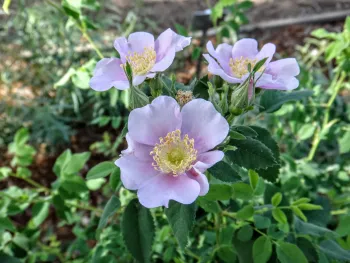
Imagine a garden designed to focus on creating natural wildlife habitat. Why not eliminate turf grass from your own garden and replace it with trees, shrubs, perennials, and annuals that benefit wildlife? Welcome to Naturescaping, a method of landscaping that allows people and nature to coexist. By growing appropriate plants, especially natives, and adopting a few new practices, you can attract insects, birds, and other wildlife to your garden. Naturescaping can help to replace habitat destroyed by urban development, while at the same time helping your garden fit better into the local environment. If neighbors cooperate to transform their gardens, together they can create wildlife corridors between disconnected natural areas. If you’d like to try this, here are some suggestions for naturescaping your own garden.
Reduce or eliminate your lawn. Lawns can provide an attractive surface where people and pets can play or just relax. But lawns consume a lot of resources, including large quantities of water for irrigation, as well as the energy needed to manufacture fertilizer and herbicides and to power lawnmowers. At the same time, lawns contribute little of value to wildlife (e.g. food, shelter, or nesting material). If you have a lawn, is it being used enough to justify all the time and resources required to maintain it? If not, choose other plantings that will provide better habitat for wildlife.
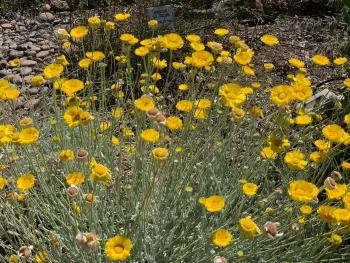
Reduce or eliminate pesticide use. Because pesticides often kill beneficial insects along with the unwanted ones, they should be used very sparingly as a last resort. In a habitat garden you actually want more insects. As primary consumers of plants, insects are a valuable component of the food chain, supporting other animals like lizards and birds in the garden. In fact, studies show that more than 90% of terrestrial bird species feed insects, especially caterpillars, to their young. If you are willing to tolerate some insect damage to your plants, you will increase the food supply available for the birds and other creatures in your yard.
Add native plants to the garden. Insects coevolved with native plants, and those plants provide good quality food for them. Non-native plants don’t always contribute the same value to local wildlife. Native plants are also adapted to our local soils and climate. There is no need to rip out all your non-native plants, though. Just watch the non-natives for evidence of use by wildlife, such as pollinators visiting the flowers; insects, birds or small mammals eating seeds, berries or leaves; or animals sheltering there. Non-native plants that don’t exhibit any of these signs are prime candidates for removal and replacement by a more useful native plant.
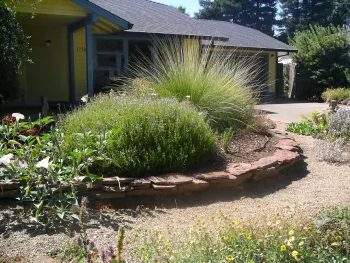
Be a little lazy and a little messy. Don’t be too quick to deadhead spent flowers, cut plants back, rake leaves, weed, or prune dead branches. If you allow at least some flowers to go to seed, those seeds will provide food for birds. Some native bees nest in dead grass or dead wood. Many invertebrates overwinter under fallen leaves. If you cut down a tree, consider leaving the stump to provide nesting areas. Fallen leaves and twigs can be left on the ground to become a natural mulch, but consider the potential fire hazard and be sure to mitigate the tinder and dead wood as necessary.
Create vertical habitat layers. Incorporate a variety of plant heights in your garden. Different critters will use different areas of a layered garden. The canopies of large trees provide roosting spots and nest cavities for birds and squirrels. These trees often bear nuts, acorns, or fruits for wildlife to eat. Shrubs and small trees also provide nesting spots and fruits or berries. Herbaceous plants, both annual and perennial, provide seeds, pollen, and nectar. The dried plants are often used as nesting materials. Soil augmented with decaying leaves, wood, and other natural detritus is home to many invertebrates which birds and other small animals feed on.
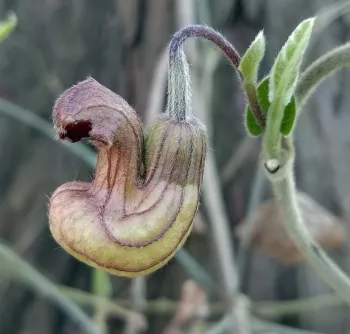
Provide the critters in your garden with food, water, shelter, and a place to raise their young. While many pollinating insects are generalists in that they collect pollen and sip nectar from a variety of plants, some are specialists and forage at only one or a few plant species. Some butterflies and moths lay their eggs on specific host plants. For example, the host plant for pipevine swallowtail butterflies, commonly seen in and around Bidwell Park, is the California pipevine.
Honeybees are generalists, but some of the native bees are specialists. Native bees vary in size, the way they collect pollen, their tongue length (which determines the kind of flowers they can feast on), and their preferences for flower shape and color. To attract the greatest variety of pollinators, choose at least 20 different species of plants with a variety of flower structures, colors, heights, and blooming periods.
Native bees don’t require supplemental water during the summer, but most other critters will benefit from a water source in your garden. This doesn’t have to be an elaborate fountain. Simple birdbaths, a shallow dish with wet pebbles, or a soaker hose run for a short period will do. Remember to change water frequently or employ a mechanical device to keep the water flowing, so your water feature does not become a harbor for West Nile Virus-bearing mosquitoes.
Wildlife needs places to hide from predators, to shelter from the rain or sun, to stay cool, and to sleep. A simple pile of rocks is an attractive shelter for lizards. They can sun themselves and keep watch from the top of the pile and then dart into the interior for protection when necessary. Plants that form thickets or have low-hanging branches, brush piles, ground cover, and evergreens can all provide cover. These sheltered areas can also provide wildlife with a safe place to raise their young. Wood, dried stems, grasses, twigs, and tree cavities are valuable nest-building materials for many kinds of creatures. Leafcutter bees construct nests from circles they cut from the perimeter of western redbud or other leaves. Most native bees excavate holes in the ground for their nests. While mulch is helpful in controlling weeds and providing cover for invertebrates, leave a small corner of your yard with bare soil for these ground-nesters to use.
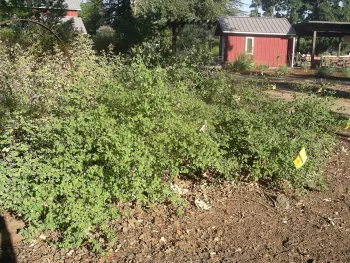
Other resources:
The Xerces Society has a list of California pollinator plants at Recommended Plants: California Central Valley Region | Xerces Society
The California Native Plant Society maintains Calscape, a database of native plants in cultivation along with their cultural requirements and pollinator associations.
UC Master Gardeners of Butte County are part of the University of California Cooperative Extension (UCCE) system. To learn more about us and our upcoming events, and for help with gardening in our area visit our website. If you have a gardening question or problem, email the Hotline at mgbutte@ucanr.edu or leave a phone message on our Hotline at 530-552-5812. To speak to a Master Gardener about a gardening issue, or to drop by the MG office during Hotline hours, see the most current information on our Ask Us section of our website.

